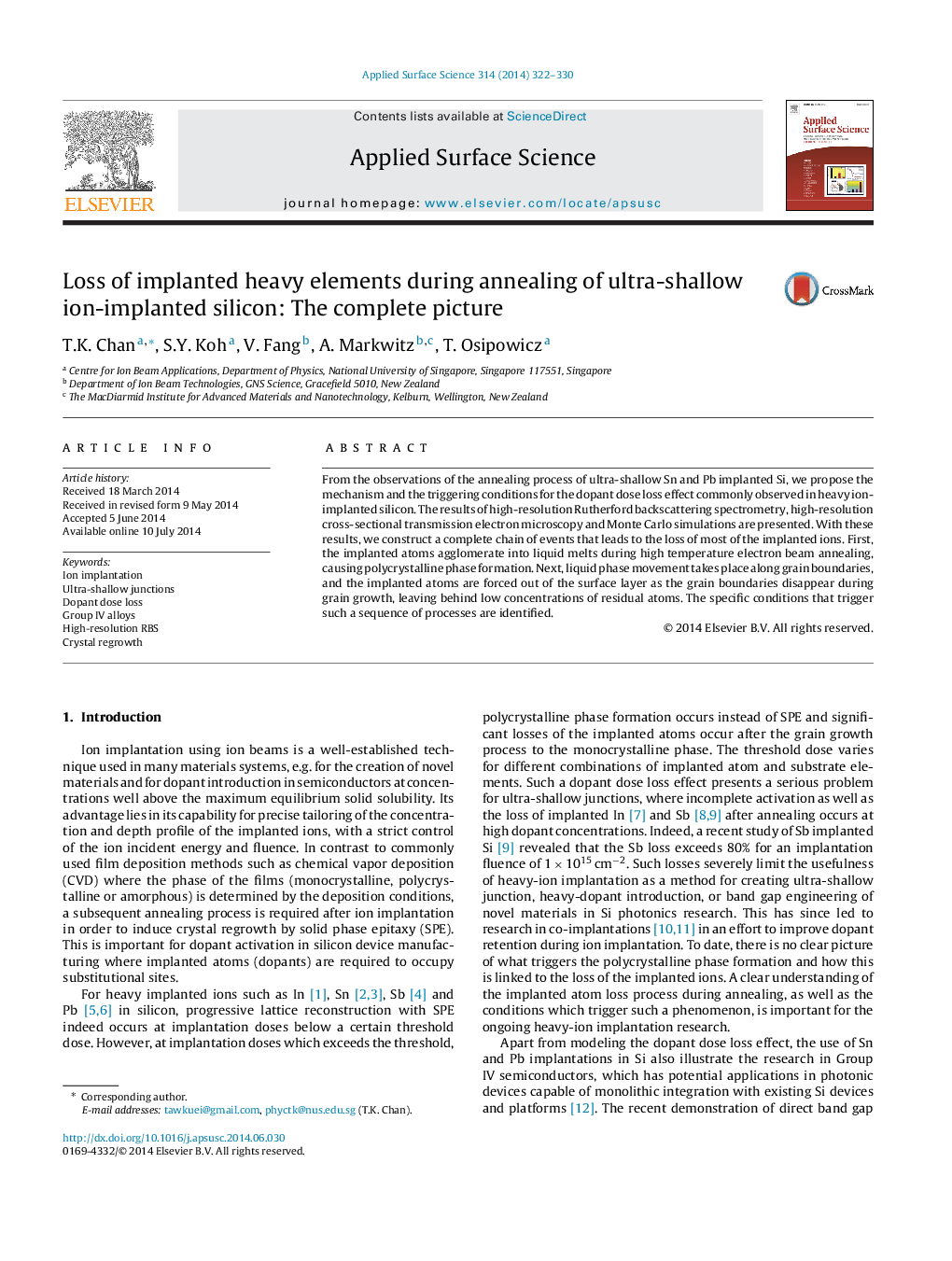| Article ID | Journal | Published Year | Pages | File Type |
|---|---|---|---|---|
| 5358366 | Applied Surface Science | 2014 | 9 Pages |
Abstract
From the observations of the annealing process of ultra-shallow Sn and Pb implanted Si, we propose the mechanism and the triggering conditions for the dopant dose loss effect commonly observed in heavy ion-implanted silicon. The results of high-resolution Rutherford backscattering spectrometry, high-resolution cross-sectional transmission electron microscopy and Monte Carlo simulations are presented. With these results, we construct a complete chain of events that leads to the loss of most of the implanted ions. First, the implanted atoms agglomerate into liquid melts during high temperature electron beam annealing, causing polycrystalline phase formation. Next, liquid phase movement takes place along grain boundaries, and the implanted atoms are forced out of the surface layer as the grain boundaries disappear during grain growth, leaving behind low concentrations of residual atoms. The specific conditions that trigger such a sequence of processes are identified.
Related Topics
Physical Sciences and Engineering
Chemistry
Physical and Theoretical Chemistry
Authors
T.K. Chan, S.Y. Koh, V. Fang, A. Markwitz, T. Osipowicz,
